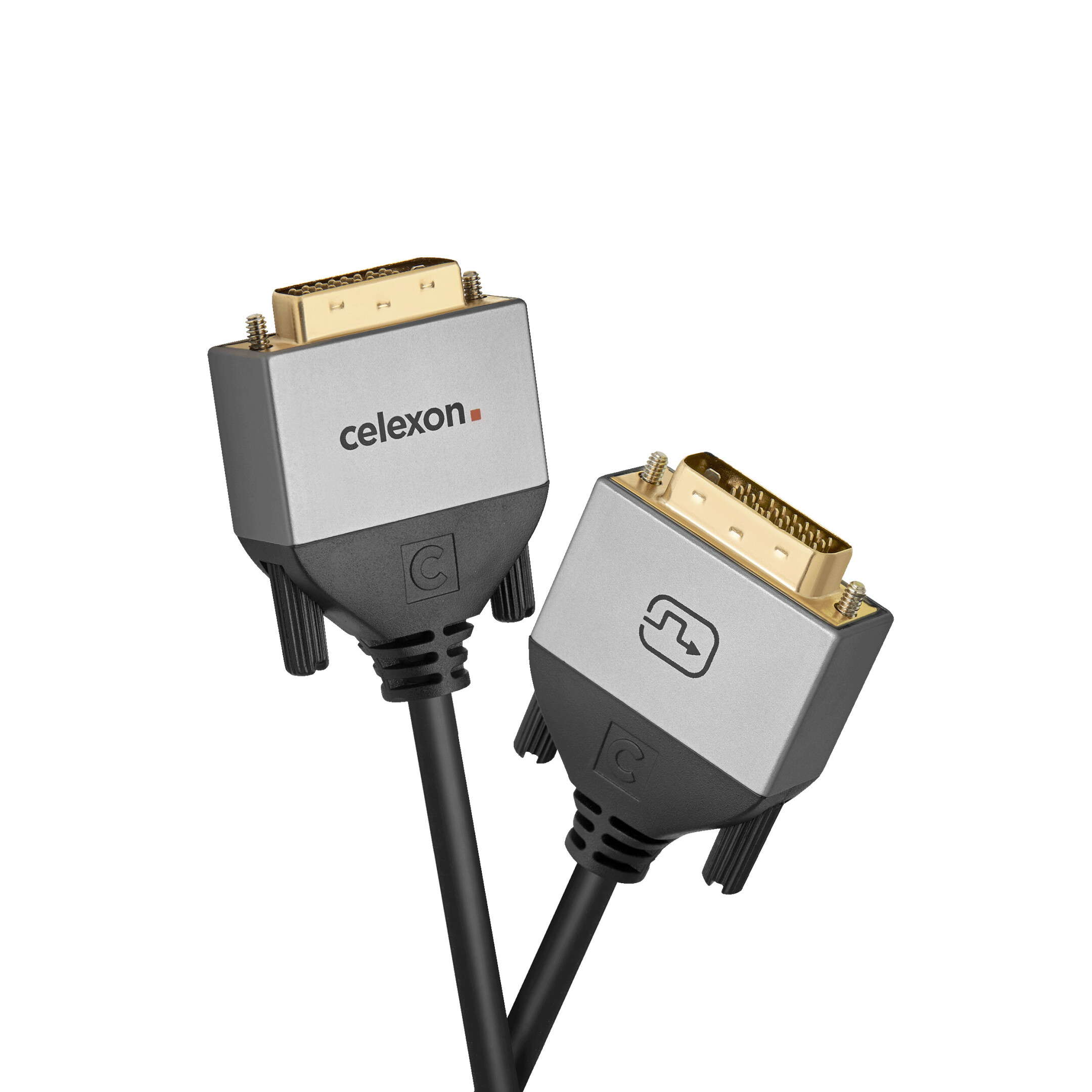



























£7.99*


Product information
The celexon DVI Dual Link cable transmits signals with resolutions up to 2K (2560x1600p @60Hz with 10 bit colour depth). Due to the colour subsampling of 4:4:4, all brightness and image information is transmitted in full sharpness.
The higher resolution is achieved with the help of the Dual Link method. Via DVI Single Link, only resolutions up to Full HD (1920x1080p @60Hz) can be transmitted. The video data is transmitted via TMDS over 4 data lines. With the Dual Link method, the video data is distributed to two TMDS transmitters, which doubles the clock frequency to 330 MHz and allows resolutions of up to 2560x1600 pixels to be transmitted at 60 Hertz refresh rate.
Thanks to the two screws located on the connector, the plugs can be easily and securely screwed to the unit connections. Unintentional removal is thus prevented.
The DVI cables in the Professional Line are triple-shielded and, thanks to their gold-plated contacts, guarantee high corrosion resistance and reliable transmission performance.
celexon's Professional Line combines technically reliable functionality and flawless workmanship with elegant design.
Whether you use our cables for office (home office), entertainment or professional use, you are perfectly connected in all areas.
KEY INFORMATION
- DVI-D (24+1) plug to DVI-D (24+1) plug
- Standard: DVI Dual Link
- Transmission rate: 9.9 Gbps
- Max. Resolution: 2K / WQXGA / 2560x1600p @60Hz, 10 Bit, 4:4:4
- Supported colour spaces: 16/24 bit RGB/YUV, Deep Color, x.v.Color.
- Other features: HDCP, EDID
- Connector: gold-plated contacts, chrome-plated aluminium housing, flexible bend protection
- Cable: high-purity copper conductors, 3-fold shielding, PVC sheath with 6.5 mm diameter
- Cable colour: black
- Cable type: round
- Cable length: 1.0m
- REACH, RoHs compliant
IN THE BOX
- 1x celexon DVI Dual Link Cable 1.0m - Professional Line
Technical data
| Name | celexon DVI Dual Link Cable 1.0m - Professional Line |
|---|---|
| Article number | 1000015554 |
| GTIN/EAN | 4260094743276 |
| Manufacturer SKU | 1000015554 |
| Model name | 1000015554 |
| Brand | celexon |
| Product Type | DVI cable |
| Product Series | celexon DVI DL Professional Line |
| Inputs | 1x DVI-D |
| Outputs | 1x DVI-D |
| Cable length | 1 m |
| Product width | 4 cm |
| Product height | 1.6 cm |
| Product depth | 100 cm |
| Weight | 0.13 kg |
| Colour | Black |
| Condition | New |
| Warranty | 24 Month |
| Warranty type | Bringin service Service and support information |
Product safety
| Person responsible for the EU |
|---|
| celexon Europe GmbH |
| Gutenbergstraße 2 |
| 48282 Emsdetten |
| Germany |
| info@celexon.de |



